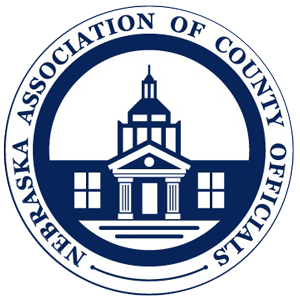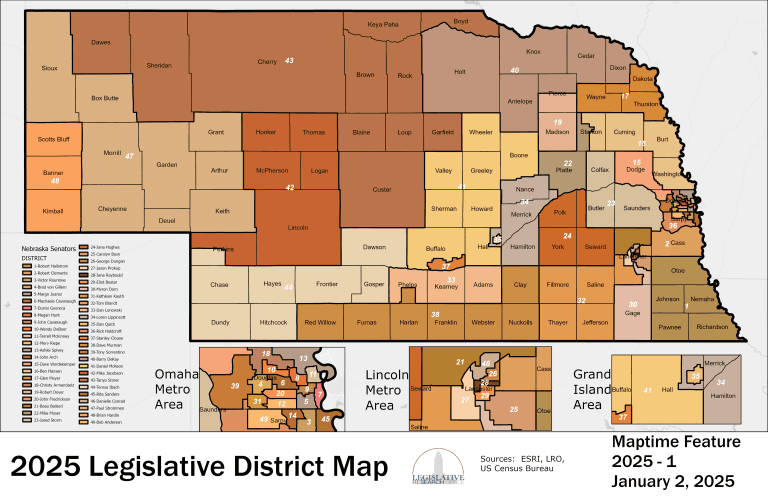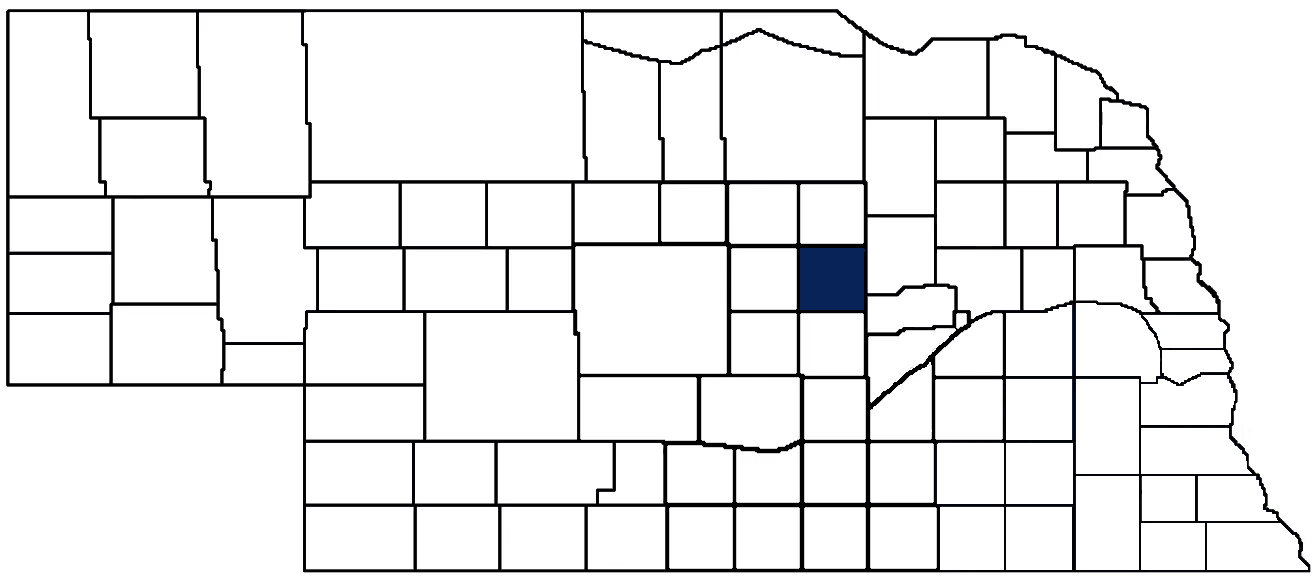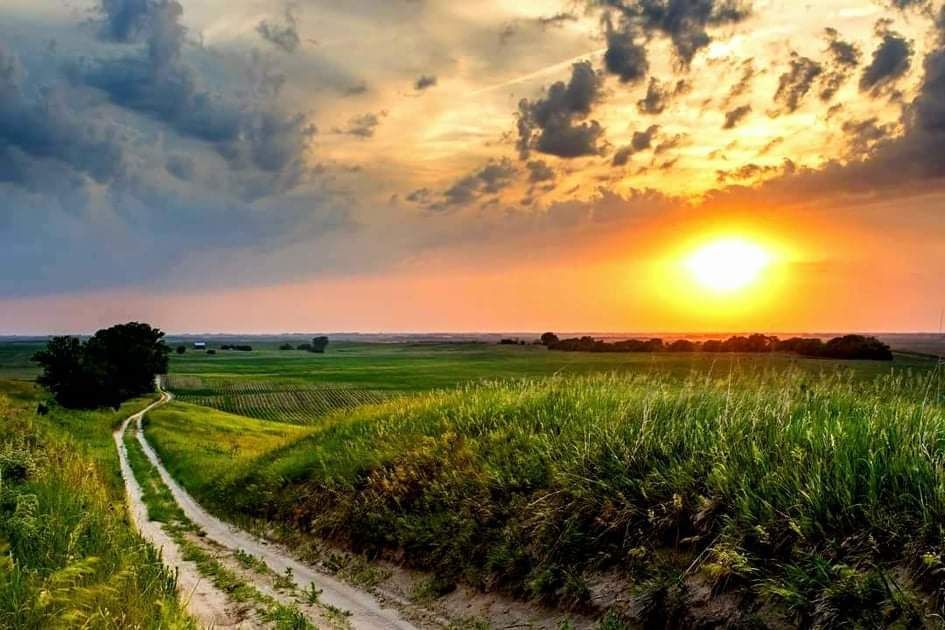- General Info
- Demographics
- Education and Employment
- Valuation and Taxes Levied
- State Senators
- History
- County Programs
- Other Information
Communities and Development
Greeley County Seat: Greeley Center
Total County Population: 2,188
- Villages (pop.): Greeley Center (402), Scotia (301), Spalding (408), Wolbach (224)
- Unincorporated Pop. (% of county pop.): 853 (39%) 2020
Land Development (% of total land in county):
- Agriculture: 96%
- By method: Pasture (pure grassland) (57%), Irrigated (row crop/grain/forage) (30%), Dryland (row crop/grain/forage) (8%) • Neb. Dept. of Rev. - total equals agriculture's %
- By commodity: Livestock (grassland) 57%, Corn 22%, Soybeans 13%, Alfalfa 3% • USDA - equals agriculture's % plus some wetlands (1%) and minus public grassland/wetlands and reserve
- Residential, Commercial, Industrial, Conservation Reserve & Exempt (combined): 4% 2022
County Offices
Courthouse Address and Hours:
101 South Kildare
Greeley, Nebraska 68842
M-F 8:00 am - 4:00 pm
County Board Chairperson: Jordan Foltz
Complete list of county board members
County Board Meetings: 2nd & last Tuesday of the month
View the County's Government Maps
NACO District: Central
General
Population: 2,188
Land area (sq. mi.): 569.81
Population per square mile: 3.8
Race and Age
Race 2020
White: 95.9%
African American: 0.0%
American Indian: 0.1%
Asian: 0.3%
Hispanic: 2.4%
Native Hawaiian and Pacific Islander: 0.0%
Native Hawaiian and Pacific Islander: 0.8%
Age 2020
0-17: 23.0%
18-64: 51.3%
65+: 25.8%
Households
Total households: 948 2020
With one child: 100 2022
With 2+ children: 170 2022
With seniors (65+): 330 2022
Socioeconomics
Personal income per capita: $58,894 2023
% of Population in Poverty: 10.9% 2023
# of Housing Units: 1,189 2020
Owner-occupied rate: 82.1% 2020
Median home price: $94,980 Q4 2024
2024 building permits for detached single family homes: 6
2024 building permits for non-detached housing units: 0 (townhouse, duplex, or apt. unit)
Technology
Access to broadband (100 Mbps via fiber or cable modem): 42.4% 2021
Sources: National Association of Realtors, Nebraska Library Commission, U.S. Bureau of Economic Analysis, U.S. Census Bureau
Employment, Schools, and Child Care
Unemployment rate: 2.9% March 2025
County Employment Website: https://greeleycounty.ne.gov/webpages/links/public_notices.html
High school graduate or higher: 90.9% 2020
School Districts: Central Valley Public Schools, Ord Public Schools, Riverside Public Schools, St. Paul Public Schools, Wheeler Central Public Schools
Bachelor's degree or higher: 25.6% 2020
Community College Service Area: Central Community College
Countywide child care capacity: 7 providers; 78 children 2024
Find child care: For a list of child care providers in your zip code, visit Nebraska DHHS or the Nebraska Resource and Referral System.
Greeley County Economy
Annual Gross Domestic Product (GDP): $184,687,000 2023
Nonfarm Small Business Receipts: $31,873,368 2023
Nonfarm Wage Income: $38,327,000 2022
Farm and Ranch Commodity Sales Receipts: $201,206,000 2022
Farm and Ranch Operations (Non-Sales) Receipts: $8,020,000 2022
- For components of nonfarm small business receipts, nonfarm wage income, and farm & ranch commodity sales and operations receipts, see "Notes" below.
Grain Elevators by Location (bushels capacity):
- Greeley Center: Country Partners (393,817)
- Midway: Country Partners (2,357,584)
- Spalding: Country Partners (1,314,847)
- (1 bushel = 56 lbs. corn/sorghum, 60 lbs. soybeans/wheat; % max. moisture = 18% beans, 15.5% corn, 14% sorghum/soybeans, 13.5% wheat)
Railroad Miles: 25.02 main, 1.52 side
- Places with Railroad Service: Scotia
Local Grain Market: Click for today's grain prices in Greeley County
Cattle Producers: 225
- Pastureland Cash Rent (avg.): $47/acre/yr 2024
Crop Producers: 205
- Dryland Cash Rent (avg.): $137/acre/yr 2024
- Irrigated Land Cash Rent (avg.): $275/acre/yr 2024
Electricity Providers: Cornhusker PPD, Howard Greeley Rural PPD, Loup Valleys Rural PPD, Village of Spalding
Irrigation and Drinking Water
Rural Irrigation Wells: 881 2024
Rural Livestock Wells: 324 2024
Rural Commercial/Industrial Wells: 2 2024
Rural Drinking Water Wells: 129 2024
Drinking Water Utility Connections: 686 Residential; 114 Commercial; 0 Industrial 2024
Surface Water Diversions (Irrigation): 51 2024
Notes
Greeley County Economy
- Nonfarm small business receipts are reported by partnerships and sole proprietorships. They do not include receipts reported by cooperative associations.
- Nonfarm wage income is reported based upon the wage earner's residential address; therefore, it also includes wages earned by Greeley County residents in other counties or states, but it excludes wages earned in Greeley County by residents of other counties or states.
- Nonfarm wage income excludes wages earned by anyone claimed as a dependent.
- Farm and ranch commodity sales receipts and operations receipts are reported based upon the farm or ranch owner's principal county of operations; therefore, those figures also include receipts reported by producers operating principally in Greeley County for their production in other counties or states, but the figures exclude receipts reported for production in Greeley County by producers operating principally in other counties or states.
Irrigation and Drinking Water
- A rural irrigation well is any well intended for irrigating crops that, either on its own or as part of a set of commingled wells, is capable of pumping more than fifty (50) gallons of water per minute (gpm). Note that some rural commercial/industrial wells are also capable of pumping more than 50 gpm. In Nebraska, the owner of any well--or set of commingled wells--that is capable of pumping more than 50 gpm must register the well(s) with the state government and have a permit for the well(s) from the local natural resource district (NRD).
- Rural livestock wells and rural drinking water (also known as "domestic") wells are not allowed to pump more than 50 gpm unless permitted by the local NRD. Each rural drinking water well usually serves one single family home, though in rare cases a rural drinking water well serves multiple homes.
- Data on rural livestock wells and rural drinking water wells may be incomplete for wells drilled prior to September 9, 1993. State law does not require wells drilled prior to that date to be registered with the state government if the wells are not capable of pumping more than 50 gpm. Neb. Rev. Stat. § 46-735; see Laws 1993, LB 131, § 25.
Sources: National Agricultural Statistics Service (USDA), Nebraska Cooperative Council, Nebraska Coordinating Commission for Postsecondary Education, Nebraska Department of Health and Human Services, Nebraska Department of Revenue, Nebraska Department of Transportation, Nebraska Office of the CIO, Nebraska Power Review Board, Nebraska Public Service Commission, U.S. Bureau of Economic Analysis, U.S. Bureau of Labor Statistics, U.S. Census Bureau, U.S. Energy Information Administration, U.S. Department of the Treasury (IRS), Warehouse and Commodity Management Division (USDA)
2024 Levies and Valuation
County levy rate: $0.2046 per $100 of taxable valuation
County property taxes levied: $2,337,222
Total local government property taxes levied: $12,107,897
Total countywide taxable valuation: $1,142,224,102
Federal PILT payment to Greeley County (FY2024): $4,081 regarding 1,219 federally-owned acres
Click here for all levy rates in Greeley County
County Levy and Taxation Laws
Levy limits
Since 1996, counties and other political subdivisions have been subject to the levy limits listed in Neb. Rev. Stat. § 77-3442 and Neb. Rev. Stat. § 77-3443.
Statutes and regulations
Nebraska Revised Statutes (Chapter 77)
Nebraska Administrative Code (Title 350)
Local tax reductions, exemptions, and credits:
Neb. Rev. Stat. § 76-902(5)(a) (Deed "stamp tax" exemption): "The [stamp tax] shall not apply to: ... (5)(a) Deeds between spouses, between ex-spouses for the purpose of conveying any rights to property acquired or held during the marriage, or between parent and child, without actual consideration therefor."
Neb. Rev. Stat. § 77-201(2) (Valuation of agricultural land and horticultural land): "Agricultural land and horticultural land as defined in section 77-1359 shall constitute a separate and distinct class of property for purposes of property taxation, shall be subject to taxation, unless expressly exempt from taxation, and shall be valued at seventy-five percent of its actual value, except that for school district taxes levied to pay the principal and interest on bonds that are approved by a vote of the people on or after January 1, 2022, such land shall be valued at fifty percent of its actual value."
Neb. Rev. Stat. § 77-6703(1) (Tax credit for school district taxes paid): "(1) For taxable years beginning or deemed to begin on or after January 1, 2020, under the Internal Revenue Code of 1986, as amended, there shall be allowed to each eligible taxpayer a refundable credit against the income tax imposed by the Nebraska Revenue Act of 1967 or against the franchise tax imposed by sections 77-3801 to 77-3807. The credit shall be equal to the credit percentage for the taxable year, as set by the department under subsection (2) of this section, multiplied by the amount of school district taxes paid by the eligible taxpayer during such taxable year."
Sources: Nebraska Department of Revenue
State Senator: Daniel D. McKeon (District 41)
Committees
- Agriculture
- Business and Labor
- Government, Military and Veterans Affairs
- Building Maintenance
Map and statistics for Legislative District 41
Map of all districts in the Nebraska Unicameral Legislature
Greeley County History
Number of Registered Historic Places: 6
Year Authorized: 1871
Year Organized: 1872
Etymology: Horace Greeley (journalist)
“Go west, young man, and grow up with the country.” Those were the words credited to Horace Greeley, noted American newspaper editor. In 1871, a large number of settlers had ventured westward to central Nebraska, culminating in the formation of Greeley County, nestled between the Cedar River to the northeast and the North Loup River to the southwest.
Several groups of settlers helped propel Greeley County’s development during its early years, but the Irish Catholic Colonization Association left an indelible imprint on the county. The group purchased tends of thousands of acres in the county with the purpose of relocating Irish immigrants who had come to the United States following the Irish Potato Famine in the mid-nineteenth century. Several towns in Greeley have distinctly Irish roots, including Spalding, Belfast, and O’Connor.
Despite the burgeoning Irish influence and population, the town of Scotia (Latin for Scotland) became the original county seat. Situated near the North Loup River in the southwest corner of the county, the settlement achieved sufficient population to wrest the county seat from Lamartine in 1874. A modest courthouse was built the following year.
However, a new settlement with its eyes on the county seat was already emerging. In 1885, the centrally located Greeley Center welcomed the railroad and the associated benefits of becoming a railway junction town. Although Greeley Center had not yet obtained the county seat, the town preemptively built a courthouse, which also featured a jail. Five years and multiple elections later, the town finally claimed the county seat from Scotia. Shortly thereafter, officials decided to drop the “Center” from the town name, and thus, the county seat would be forever called Greeley.
Highlight an important program in your county in this space! Send an email to:
Local Highlights
License Plate Number: 62
Time Zone: Central
Number of Veterans: 186 2023
Zoned County: Yes
Number of County-Owned Bridges: 62
Election Data
General Election Turnout: 80% 2024
Total Registered Voters: 1,576 2024
Number of Precincts: 4 2022
Number of Election Day Polling Places: 4 2022
Land Area per Polling Place (avg.): 142.66 sq. miles
Intergovernmental Data
Emergency Mgt. Planning, Exercise and Training (PET) Region: North Central/Sandhills
Natural Resource Districts: Lower Loup NRD
State Lands (acres): Davis Creek WMA (2,450 Greeley & Valley)
Federal Lands (acres): Davis Creek Reservoir (332 Greeley & Valley)
Sources: Nebraska Department of Transportation, Nebraska Emergency Management Agency, Nebraska Game & Parks Commission, Nebraska Legislature, Nebraska Office of the CIO, Nebraska Secretary of State, U.S. Department of Veterans Affairs, U.S. Election Assistance Commission, U.S. National Archives and Records Administration (eCFR)



